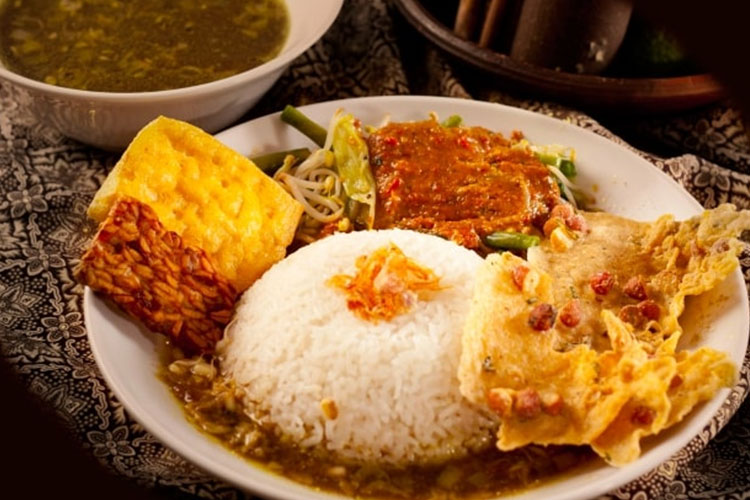Pecel Rawon: A Culinary Fusion of Banyuwangi's Rich Culture

TIMESINDONESIA, BANYUWANGI – Pecel Rawon is a harmonious blend of various flavors and cultures. This dish is a result of the acculturation of local culture that has the power to unite cultural diversity in one bowl. Essentially, the acculturation that occurred in the creation of Pecel Rawon is a reflection of the diversity of Banyuwangi's society itself. On one side, there's Pecel, a traditional Javanese dish made from various boiled vegetables smothered in spicy peanut sauce. On the other side, there's Rawon, a distinctive dish from East Java known for its rich and dark broth.
In one bowl of Pecel Rawon, the uniqueness and cultural richness of East Java are intertwined, offering a taste that cannot be found elsewhere. Thus, Pecel Rawon is not only a symbol of local cultural acculturation in Banyuwangi but also a legendary dish that reflects the cultural identity and cuisine of the local community.
Advertisement
The savory and spicy flavors of Pecel, combined with the deliciousness of Rawon broth, create a distinctive and impressive harmony of flavors. Furthermore, Pecel Rawon also provides insight into how the people of Banyuwangi, especially the Osing ethnic group, are able to unearth and blend their cultural wealth into a culinary masterpiece.
As a legendary culinary dish, Pecel Rawon also serves as a witness to the history of culinary development in Banyuwangi, showing how local culture can evolve and adapt to changing times. Therefore, Pecel Rawon is not just food; it is an integral part of the identity and life of the people of Bumi Blambangan.
However, recently, Pecel Rawon, which seemed to symbolize the culinary identity of Banyuwangi, became a hot topic on social media. This was due to the change of the name "Pecel Rawon" from Banyuwangi to "Rawon Pecel," claimed as a typical dish of Jember.
Hasan Basri, a cultural expert from Banyuwangi, explained that Pecel Rawon has been known and considered a culinary icon of Banyuwangi since the 1970s. Nevertheless, there is no precise record explaining the exact origin of this culinary creation, which has now become a staple in various eateries, from modest stalls to luxurious restaurants in the Gandrung City.
"This culinary heritage is indeed a local treasure of the people of Banyuwangi. Pecel Rawon emerged from the city center of Banyuwangi," explained Hasan on Saturday (August 26, 2023).
Hasan also shared how cultural acculturation and assimilation are characteristics of the original Banyuwangi community. This is evident not only in the variety of their cuisine but also in various forms of art that blend and mix cultures.
"Banyuwangi, as a coastal region with a global maritime trade, has produced a blend of cultures. Examples include the Osing ethnic group, Bali, Mandar, Madura, Java, as well as Arab and Chinese ethnicities," he explained.
Hasan added that the open-mindedness and willingness to accept new things of the Osing community played a crucial role in the culinary diversity of Banyuwangi.
"This is evident in the various local cuisines that can be found in Banyuwangi, but unfortunately, this diversity is often overlooked by many," said Hasan.
Furthermore, Hasan described how various types of dishes, such as Pecel Rawon, Rujak Soto, and Rujak Bakso, serve as representations of the culinary richness of Banyuwangi on the national stage.
"Pecel Rawon is a concrete example of how a region can create unique food variations by combining various elements from traditional Indonesian cuisine. It is proof that Banyuwangi possesses extraordinary culinary richness," said Hasan.
He emphasized that each region has a unique culinary flavor. Banyuwangi, for instance, tends to prefer spicy dishes – a characteristic that is evident in the spicy flavor of their Pecel.
"Acculturation is a common thing in culture. Perhaps Jember also has similar cultural and culinary variations," Hasan explained while discussing Pecel Rawon. (*)
**) Ikuti berita terbaru TIMES Indonesia di Google News klik link ini dan jangan lupa di follow.
| Editor | : Khodijah Siti |
| Publisher | : Sofyan Saqi Futaki |

